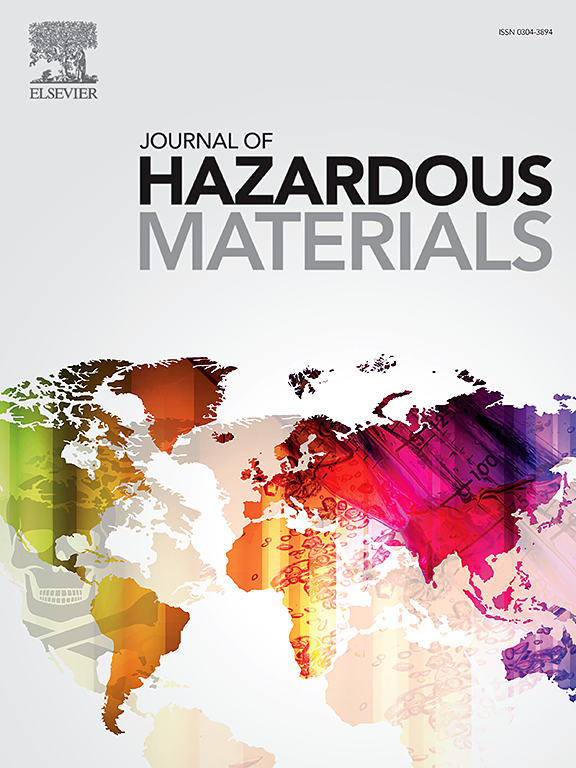Bacterial life-history trade-offs under biodegradable and conventional microplastics in cinnamon and lime concretion black soils
IF 12.2
1区 环境科学与生态学
Q1 ENGINEERING, ENVIRONMENTAL
引用次数: 0
Abstract
Microplastics (MPs) have emerged as a global environmental pollutant of growing concern, with soil serving as a critical sink for terrestrial MPs. However, the life-history trade-offs of soil bacteria to various MPs in different soils remain unclear. Here, we investigated the adaptive signatures of bacterial communities to two biodegradable and four conventional MPs in cinnamon soil and lime concretion black soil. Our results showed that bacterial diversity, composition, potential functional profiles, life-history strategies, resistance, and co-occurrence networks significantly changed under MP exposure, with soil type playing a key role. Specifically, poly(butylene succinate) (PBS), a biodegradable plastic, exerted a greater influence on bacterial diversity, community structure, and functional profiles than the other MPs in both soils. PBS MPs promoted the prevalence of copiotrophs (r-strategists), indicating reduced bacterial resistance relative to the control conditions, whereas most other MPs enhanced bacterial resistance. Moreover, PBS MPs significantly reduced the richness and evenness of both the oligotrophic and copiotrophic taxa. Co-occurrence network analysis revealed decreased stability of the overall bacterial networks, as well as oligotrophic and copiotrophic taxa, following the addition of MPs, particularly PBS. These changes may disrupt soil carbon cycling, thereby threatening soil carbon sequestration and climate regulation. Our findings provide critical insights into the bacterial life-history strategies under MP stress in different soils, useful for the risk assessment and management of MP pollution.

肉桂和石灰固结黑土中可生物降解和常规微塑料下的细菌生活史权衡
微塑料(MPs)已成为日益受到关注的全球环境污染物,土壤是陆地MPs的关键汇。然而,土壤细菌对不同土壤中各种MPs的生活史权衡仍不清楚。本文研究了肉桂土和石灰固结黑土中细菌群落对两种可生物降解和四种常规MPs的适应特征。结果表明,MP暴露下细菌多样性、组成、潜在功能特征、生活史策略、耐药性和共生网络发生显著变化,土壤类型起关键作用。其中,可生物降解塑料聚丁二酸丁二烯(PBS)对两种土壤中细菌多样性、群落结构和功能特征的影响大于其他MPs。PBS MPs促进了共生营养体(r-策略)的流行,表明相对于对照条件降低了细菌耐药性,而大多数其他MPs增强了细菌耐药性。此外,PBS MPs显著降低了少营养和多营养分类群的丰富度和均匀度。共发生网络分析显示,添加MPs(特别是PBS)后,整体细菌网络以及寡养和共养分类群的稳定性下降。这些变化可能破坏土壤碳循环,从而威胁土壤碳固存和气候调节。我们的研究结果为不同土壤中细菌在MP胁迫下的生活史策略提供了重要的见解,对MP污染的风险评估和管理有用。
本文章由计算机程序翻译,如有差异,请以英文原文为准。
求助全文
约1分钟内获得全文
求助全文
来源期刊

Journal of Hazardous Materials
工程技术-工程:环境
CiteScore
25.40
自引率
5.90%
发文量
3059
审稿时长
58 days
期刊介绍:
The Journal of Hazardous Materials serves as a global platform for promoting cutting-edge research in the field of Environmental Science and Engineering. Our publication features a wide range of articles, including full-length research papers, review articles, and perspectives, with the aim of enhancing our understanding of the dangers and risks associated with various materials concerning public health and the environment. It is important to note that the term "environmental contaminants" refers specifically to substances that pose hazardous effects through contamination, while excluding those that do not have such impacts on the environment or human health. Moreover, we emphasize the distinction between wastes and hazardous materials in order to provide further clarity on the scope of the journal. We have a keen interest in exploring specific compounds and microbial agents that have adverse effects on the environment.
 求助内容:
求助内容: 应助结果提醒方式:
应助结果提醒方式:


